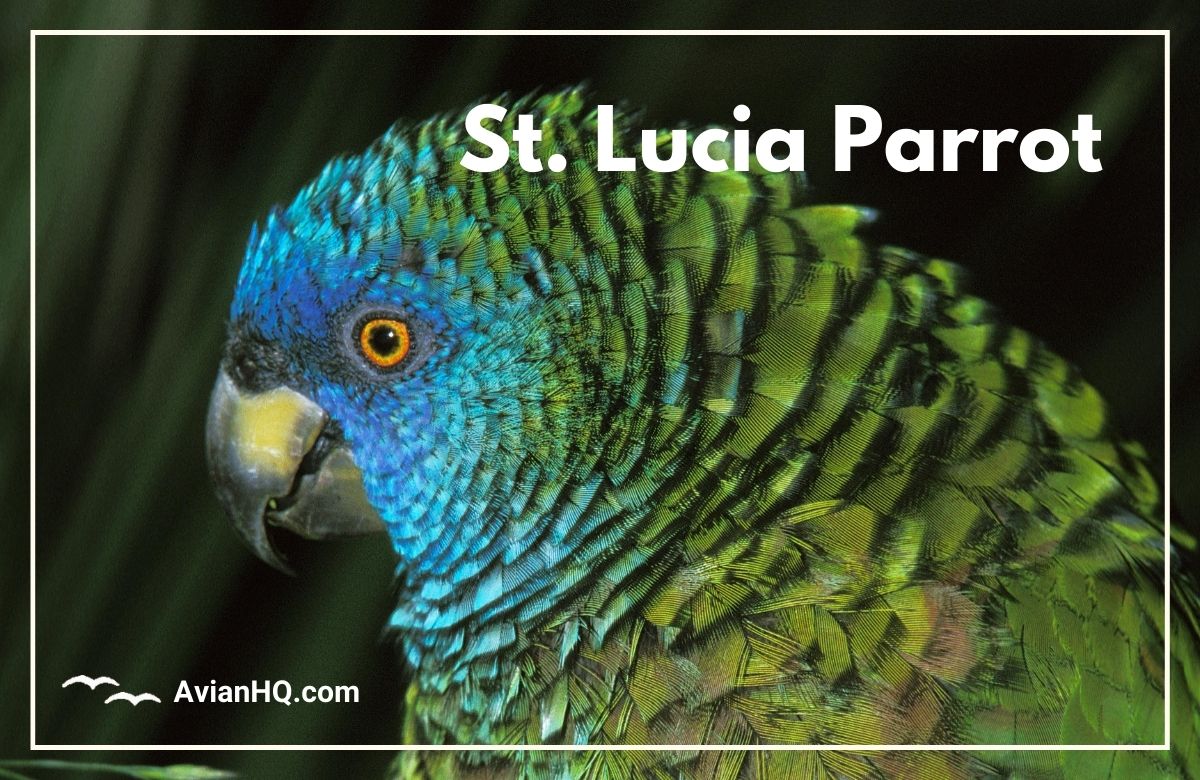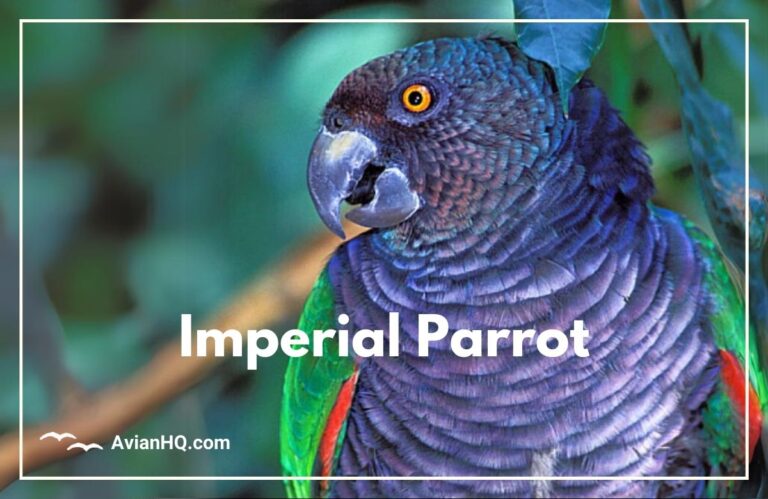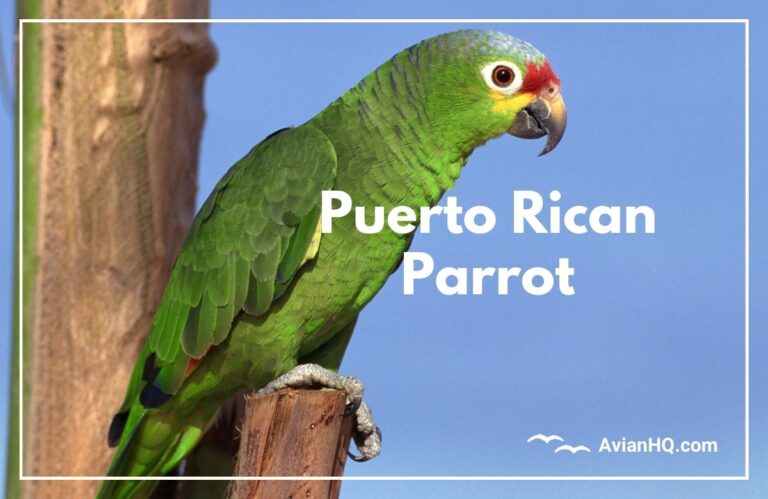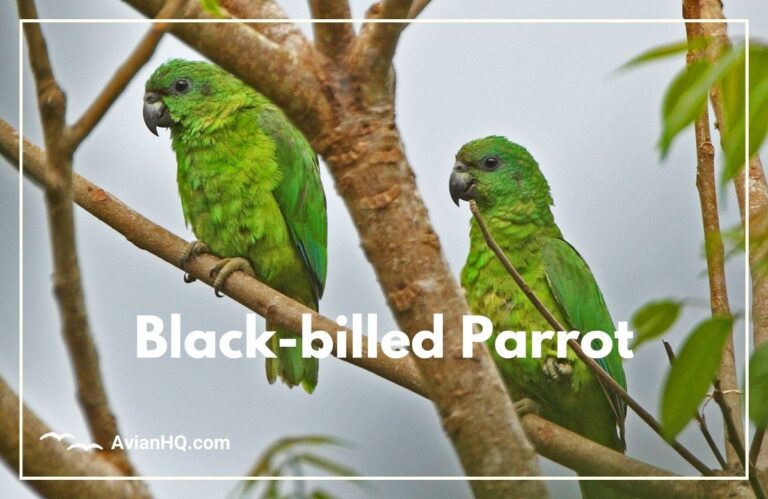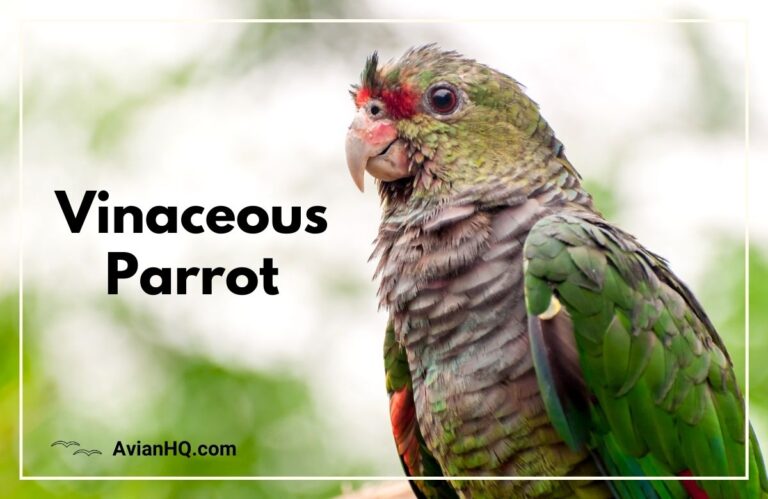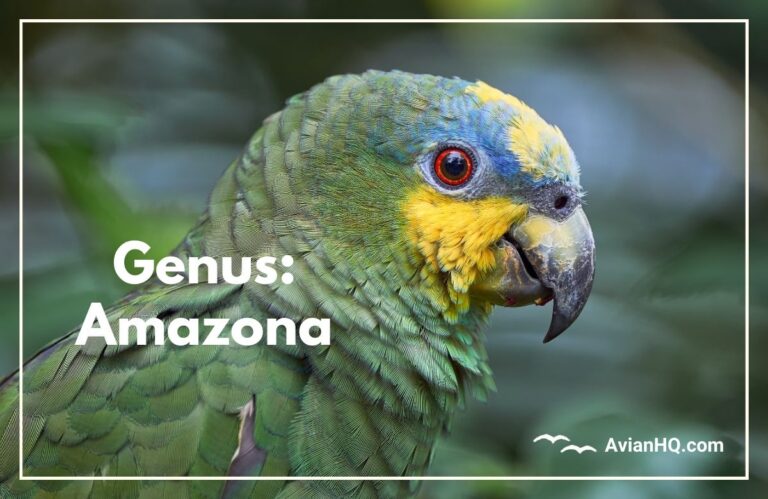St. Lucia Parrot (Amazona versicolor)
Have you ever seen the beautiful St. Lucia Parrot? This exotic rainbow-colored bird is only found on the small Caribbean island of Saint Lucia. As the national bird of Saint Lucia, the St. Lucia Parrot is a cultural icon and source of national pride. However, this species also faces threats from habitat loss and illegal capture for the pet trade. Learning more about this rare and beautiful parrot can help efforts to save it.
The St. Lucia Parrot (Amazona versicolor), also called the St. Lucia Amazon or Blue-masked Amazon, belongs to the parrot family Psittacidae. It lives exclusively in the tropical forests and mountains of Saint Lucia, usually between 1000 and 3000 feet (300-900 meters) above sea level. Weighing around 1 to 1.5 pounds (500 to 700 grams), this smallish parrot grows to about 16 to 18 inches (40 to 45 centimeters) long.
“The blue and red colors make the St. Lucia Parrot really stand out from other tropical birds.”
The St. Lucia Parrot has brilliant multi-colored plumage in shades of green, blue, yellow, and red. Prominent blue feathers on the forehead and wings give way to a vibrant scarlet-red bib across the neck and breast. The blue and red colors make the St. Lucia Parrot really stand out from other tropical birds.
History and Taxonomy
The St. Lucia Parrot has a relatively short documented history, as it is native to a small remote island. The species was first described scientifically by the naturalist P. L. S. Miller in 1776. Miller gave it the Latin name Amazona versicolor, with the genus name Amazona referring to Amazon parrots and versicolor meaning “many colored.”
This parrot is considered a monotypic species, with no division into separate subspecies across different regions. The entire global population exists only on the small 238 square mile (616 square kilometer) island of Saint Lucia in the Lesser Antilles chain of the Caribbean.
There are no recognized subspecies or introduced populations elsewhere in the world. Sadly, the small natural habitat makes the St. Lucia Parrot more vulnerable to threats like storms and deforestation. Protecting the rainforests where this flagship species lives is crucial for saving it from extinction.
Physical Appearance
The St. Lucia Parrot is a medium-small parrot with vivid colorful markings. An average adult is about 16-18 inches (40-45 cm) long and weighs around 1-1.5 pounds (500-700 grams).
The base color of the feathers is bright green, with a striking blue forehead that grades into light blue and green on the cheeks and crown. A bold red bib runs across the neck and upper breast. The wings and tail show contrasting shades of green, dark blue, yellow, and red.
Size differences between sexes: Males and females appear identical in size and coloration. No notable differences between the sexes have been documented.
Bill, eyes, legs: The bill is small and curved, colored grayish white. Eyes are orange, with neutral gray eye rings. Feet are typical parrot zygodactyl, with two toes facing forward and two back.
The vibrant mix of colors on this parrot certainly help explain how it got its scientific name Amazona versicolor or “many-colored Amazon parrot”! The red and blue markings make it stand out from its all-green Amazon parrot relatives.
Habitat and Distribution
The St. Lucia Parrot is endemic, meaning it is found in the wild only on the island of Saint Lucia in the Caribbean Sea. This species has an extremely limited native range, restricted to a single small island about 238 square miles (616 square km) in size.
Native habitat This parrot inhabits tropical forests and mountainous rainforests in the interior highlands of Saint Lucia. It stays mainly in mature forests at elevations between 1000-3000 feet (300-900 meters), within the dense canopy layer.
Native range The global range is limited to Saint Lucia island only. The species does not currently have any introduced or captive populations living elsewhere in the world. This makes it vulnerable to extinction, as its entire population exists in a small geographic range.
Protecting Saint Lucia’s tropical rainforests is crucial to saving endemic species like the St. Lucia Parrot. Habitat loss is one of the major threats facing its long-term survival.
Diet and Feeding
In the wild, the St. Lucia Parrot feeds on a varied mix of fruits, seeds, nuts, and berries from forest trees and plants. Its strong curved bill is adapted for cracking hard nuts and seeds.
Types of foods Documented food sources include the fruits and/or seeds of tree species such as Clusia, Talauma, Pouteria, Miconia, and figs. Palm fruits and flowers also contribute to the St. Lucia Parrot’s nutrient requirements.
After destructive hurricanes depleted natural food sources, these parrots have also been observed feeding on introduced banana plants.
Feeding behavior The St. Lucia Parrot is arboreal, spending most of its time in the high canopy layer of mature tall forest. It uses its climbing and flying skills to forage for ripening fruits and seeds high in the tree branches. The parrots may gather in small flocks of up to 20 individuals when feeding communally.
Protecting the native forest habitat and food sources of this specialized canopy-dwelling species is crucial for its survival. Habitat loss currently poses one of the largest threats to the St. Lucia Parrot.
Breeding and Reproduction
The St. Lucia Parrot nests in the natural tree cavities of large mature rainforest trees. Breeding activities peak in the early dry season from February to April.
Nest sites Nesting occurs in hollow cavities in large trees, either live or dead – likely the former nest sites of woodpeckers. The St. Lucia Parrot is dependent on suitable nesting holes in tall aged forest trees.
Clutch size Typical clutch size is 1-3 white eggs. The average egg size is about 1.6 x 1.3 inches (42 x 33 mm).
Incubation After the second egg is laid, the female incubates the eggs for 26-29 days until hatching.
Fledgling Chicks leave the nest cavity at around 7 weeks old, when they are ready for their first flight as juveniles.
Protecting mature nesting and roosting trees for cavity nesters like the St. Lucia Parrot is an important part of habitat conservation for this species.
Behavior and Ecology
The St. Lucia Parrot exhibits typical parrot behaviors aligned with its arboreal rainforest habitat. It is a highly social species, gathering in flocks and communal roosts.
Flock sizes Groups range from pairing up to flocks of up to 20 individuals. Social activities help this species find scattered fruit sources and maintain pair bonds.
Roosting This parrot shows communal roosting behavior, with multiple birds gathering together in a chosen roosting tree for the night.
Foraging and feeding As part of a tropical forest ecosystem, the St. Lucia Parrot interacts with various plant species. It disperses the seeds of canopy trees and palms through feeding and flight. Foraging activities also contribute to pollination networks.
Interactions with other species A few documented predators of eggs or fledglings include the snake Alsophis sibonius and White-necked Thrush Turdus albicollis. Overall predation does not currently threaten population levels.
Maintaining healthy interaction networks between the St. Lucia Parrot and other endemic rainforest species can support the biodiversity of Saint Lucia’s threatened ecosystems.
Conservation Status
Due to ongoing threats, the St. Lucia Parrot is classified as Vulnerable on the IUCN Red List of Threatened Species. However, recent population trends show promising signs of recovery with conservation efforts.
IUCN status Assessed as Vulnerable. Population was estimated around 150 birds in 1975, but has increased to 1,750-2,250 today.
Population trends Originally declined last century due to hunting and habitat loss, reaching under 200 birds in 1970s. Has rebounded to some degree but requires active management.
Major threats Main current threats are deforestation reducing nesting cavities and food sources. Also threatened by poaching, illegal capture for the pet trade, invasive species, and hurricanes.
Conservation efforts Saint Lucia Forestry Department has designated protected forest reserves. Jersey Zoo captive breeding program increased awareness. Community education programs also support protection.
Ongoing conservation initiatives aim to boost the stability and long-term viability of the recovering St. Lucia Parrot population by protecting critical old growth rainforest habitat.
Cultural Significance
The rare and beautiful St. Lucia Parrot holds a special place in the culture and history of Saint Lucia. This species is a prominent national symbol and source of pride.
National bird The parrot was officially designated the national bird of Saint Lucia in 1979. This helped galvanize conservation efforts.
Featured icon The St. Lucia Parrot appears on the country’s coins and banknotes as well as in logos, posters, and handicrafts. Schools and sports teams also embrace it.
Tourist attraction Visitors travel to Saint Lucia’s interior rainforests for a chance to see the splendid parrot in flight. This supports eco-tourism initiatives.
Conservation ambassador As a flagship umbrella species closely linked to protecting tropical forests, the St. Lucia Parrot helps build public environmental awareness on the island and globally.
By elevating this rare species as an iconic symbol of national identity, Saint Lucians have rallied around saving their beloved St. Lucia Parrot and its delicate island ecosystem.
Conclusion
The brilliantly plumed St. Lucia Parrot is a national treasure found only on its tiny Caribbean island home. This rare species has rebounded from the brink of extinction, but still faces threats like habitat loss and pet trade poaching.
Conserving the parrot is intertwined with protecting Saint Lucia’s tropical forests and the many plants and animals which share this habitat. As few as 30 years ago, forest clearance and hunting drove the vivid green, red, and blue parrot worryingly close to extinction.
Thanks to persistent conservation efforts, the St. Lucia Parrot population now appears to be stabilizing at around 2,000 individuals. But climate change, invasive species, development pressure, and storms continue to pose challenges for survival of this endemic species restricted to a lone small island.
The St. Lucia Parrot serves as an apt symbol of the fragile beauty found across the biodiverse islands of the Caribbean. Protecting this Vulnerable species in the wild for future generations can support broader environmental awareness and inspire conservation action across imperiled local ecosystems.

